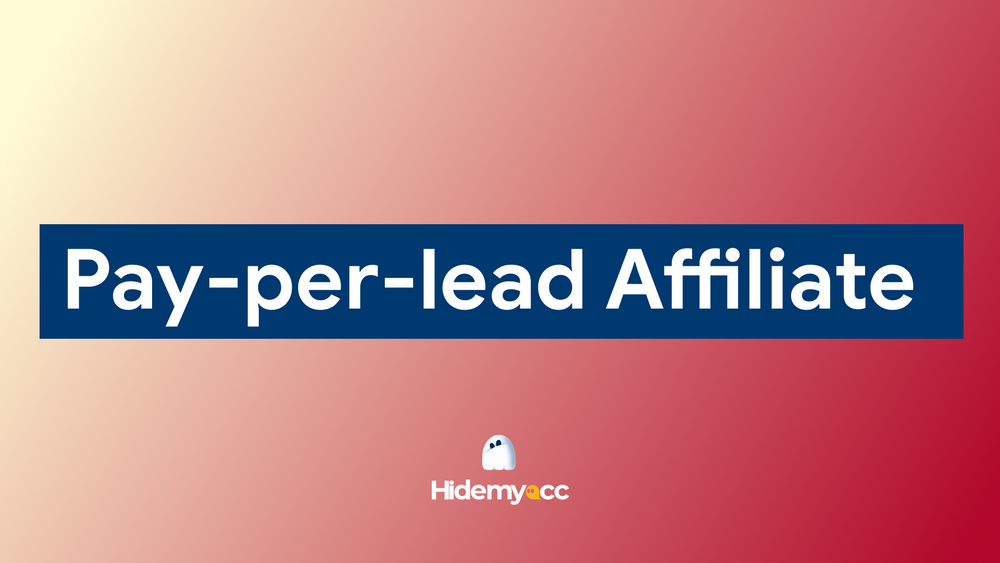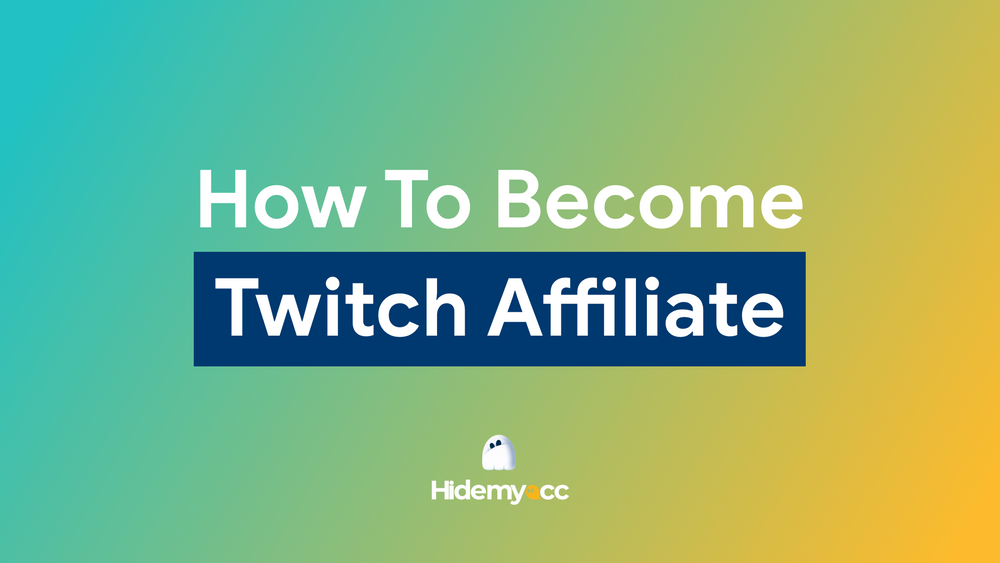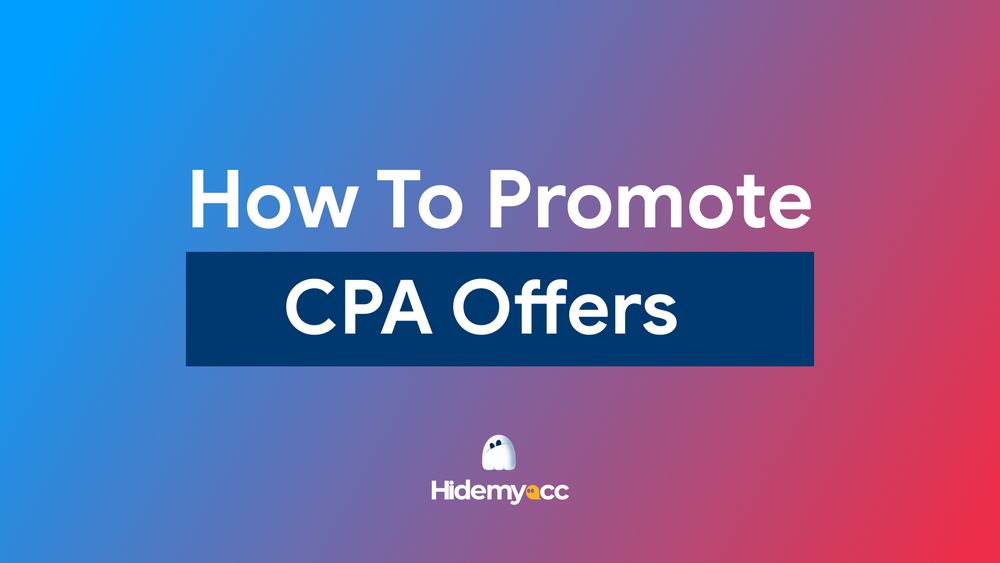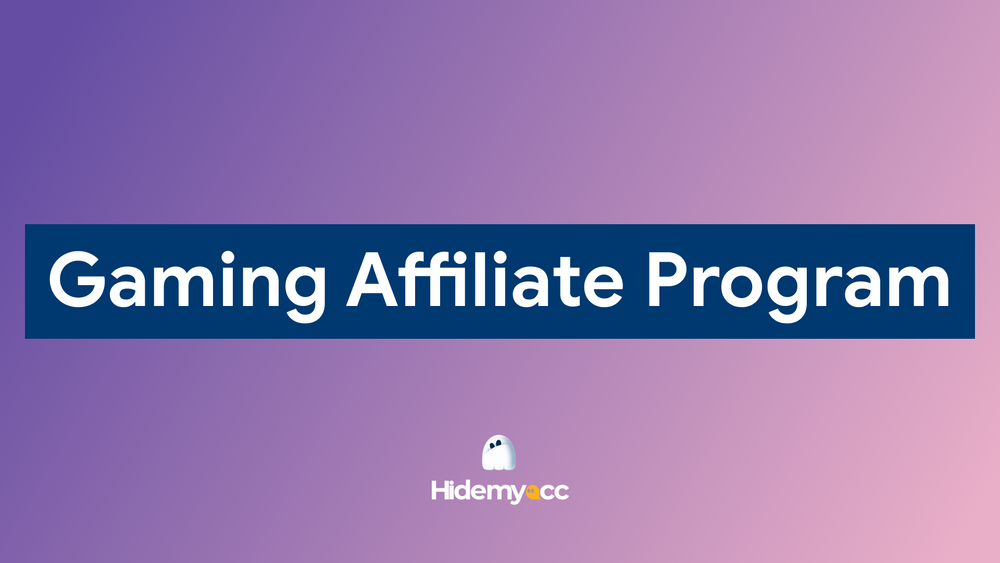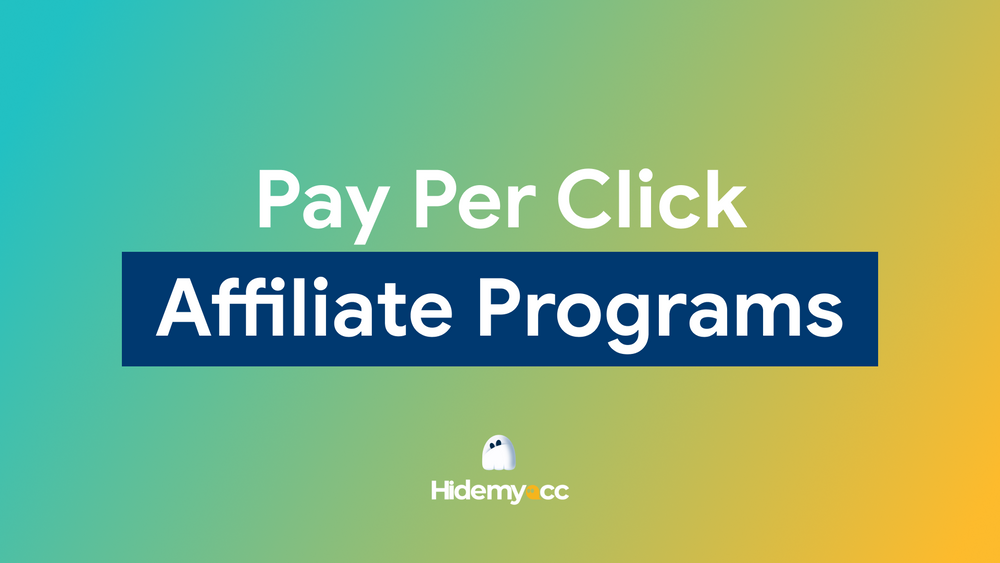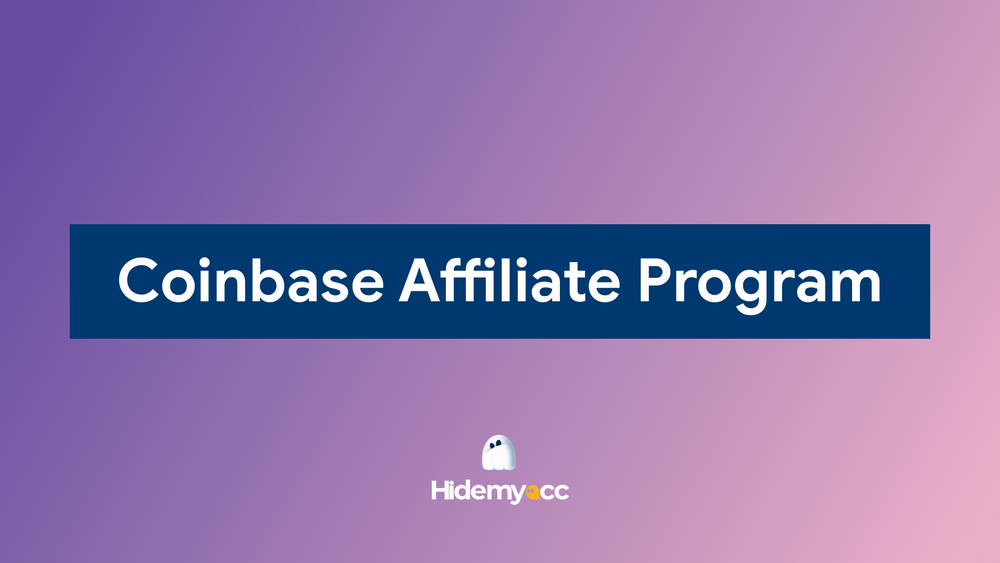If you’re searching for how to promote affiliate links effectively, you’re in the right place. Affiliate marketing offers huge earning potential, but many beginners fail to see results simply because they don’t know which promotion methods actually work.
In this guide, Hidemyacc breaks down 10 proven, beginner-friendly ways to promote affiliate links, along with essential tips to help you build trust, drive consistent traffic, and increase your commissions. Ready to turn your affiliate links into reliable income streams? Let’s get started.
1. Affiliate marketing best practices for beginners
Before we get into the "how," it's important to cover a few basics that every affiliate marketer should follow. These best practices will help you build a strong foundation and avoid common pitfalls.
1.1. Always disclose affiliate links
Transparency is crucial. Whenever you share an affiliate link, you should let your audience know. Not only is this legally required in many regions (such as under the FTC guidelines in the U.S.), but it also builds trust. A simple note like "This post contains affiliate links. I may earn a commission if you make a purchase through my link at no extra cost to you" is enough.
1.2. Focus on helping, not just selling
People can sense when you're only trying to sell to them. Instead of pushing products, focus on providing value. Solve problems, answer questions, and recommend products you genuinely believe in. If you make your content helpful, clicks and conversions will follow naturally.
1.3. Choose offers that fit your audience
Not every affiliate offer is right for every audience. Promote products that match the interests and needs of the people you're speaking to. Relevance increases trust and conversion rates, while promoting unrelated products will only confuse or annoy your audience.
Now that you understand the basics, let's move on to the real strategies.
2. How to promote affiliate links: 10 beginner-friendly methods
2.1. Build a blog or website for long-term growth
One of the most reliable ways to promote affiliate links is by creating your own blog or website. A blog allows you to create valuable, evergreen content that attracts readers from search engines like Google.
You can write product reviews, "how-to" guides, listicles like "Top 10 Tools for Freelancers," and comparison articles. Each piece of content is an opportunity to naturally insert your affiliate links.
Tip: Focus on SEO (Search Engine Optimization) from the beginning. Target specific keywords that your audience is searching for, and your content will bring in traffic for months or even years.
2.2. Promote affiliate links through social media
Social media is a powerful tool for affiliate marketing, especially if you're just starting out. Platforms like Facebook, Instagram, TikTok, Pinterest, and Twitter offer free access to large audiences.
You can create posts, videos, stories, or reels that subtly promote products. Focus on providing value first-share tips, tutorials, or personal experiences - and weave your affiliate links into your content naturally.
Platforms to consider:
- Facebook groups: Join relevant groups and contribute genuinely.
- Instagram stories: Share quick product demos or results.
- Pinterest pins: Create eye-catching graphics linked to blog posts.
- Tiktok: Short videos demonstrating product usage or benefits.
Remember, each platform has different rules about posting affiliate links directly, so always check their guidelines.
Tip: If you plan to promote affiliate links across multiple accounts on platforms like Facebook, TikTok, or Pinterest, managing those accounts properly becomes crucial. Tools like Hidemyacc allow you to create separate browser profiles for each account, keeping their fingerprints, cookies, and proxies isolated. This helps you avoid account bans and ensures smoother promotion at scale.
2.3. Start an email newsletter with valuable content
Email marketing remains one of the highest-converting channels for affiliate marketers. Building a small but engaged email list can be a game-changer.
Send out regular newsletters packed with tips, resources, and product recommendations. The key is to make your emails helpful, not salesy. Treat your subscribers like friends you're offering advice to, not customers you're trying to push.
Best practices:
- Use lead magnets like free guides to grow your list.
- Always disclose affiliate links in your emails.
- Keep your messaging authentic and value-driven.
2.4. Answer questions on Quora and niche forums
Sites like Quora, Reddit, and specialized forums are full of people asking questions - and many of those questions relate to products.
You can provide thoughtful, helpful answers and (when appropriate) recommend products using your affiliate links. Some platforms don't allow direct affiliate links, so often it's better to link to a blog post or YouTube video where your affiliate link is placed.
Important: Never spam or force your links. Focus on genuinely helping first.
2.5. Create YouTube videos and tutorials
Video content is booming. YouTube, the world's second-largest search engine, offers a massive opportunity for affiliate marketing.
You don't need fancy equipment to get started. A smartphone and decent lighting are enough. Create unboxing videos, product reviews, how-to tutorials, or "best of" lists.
Video ideas:
- "How to use [Product]"
- "Best [Product Type] for beginners"
- "[Product] vs [Competitor] honest review"
Place your affiliate links in the video description and mention them in the video itself.
2.6. Use paid ads strategically
If you have some budget to invest, paid ads can amplify your reach quickly. Platforms like Google Ads, Facebook Ads, and even Pinterest Ads allow you to target specific audiences.
Simple approach for beginners:
- Start small ($5 to $10/day).
- Promote high-converting affiliate offers.
- Split-test different headlines and creatives.
Warning: Some affiliate programs restrict paid ads, so always check the rules first.
2.7. Offer bonuses to incentivize purchases
One way to stand out from other affiliates is by offering bonuses to buyers who purchase through your link.
Bonuses could be anything from exclusive tutorials, free templates, private coaching calls, or resource bundles. Make sure your bonus genuinely adds value to the product you're promoting.
Example: Promote an online course and offer a "Getting Started" checklist or extra coaching session.
Be sure to comply with the affiliate program's terms and conditions regarding bonuses.
2.8. Collaborate with other content creators
Collaboration can significantly expand your reach. Partner with bloggers, YouTubers, podcasters, or influencers who share a similar audience.
Ways to collaborate:
- Guest posting on each other's blogs.
- Hosting webinars or live streams together.
- Sharing each other's content on social media.
Collaboration creates win-win opportunities and helps you tap into established audiences.
2.9. Repurpose content across different channels
Maximize your effort by repurposing content. A single blog post can become:
- A YouTube video
- A series of Instagram posts
- A Pinterest infographic
- A LinkedIn article
- A Reddit post
Different formats help you reach different audiences while reinforcing your affiliate promotions.
Tip: Always tweak content slightly to fit the platform's style and audience expectations.
2.10. Join giveaways or contests to drive traffic
Giveaways can generate a lot of buzz quickly. You can run your own giveaway or team up with others.
Offer a prize related to your affiliate product. To enter the giveaway, participants might be asked to visit a blog post, follow a social media account, or watch a video—all places where your affiliate links can be featured.
Important: Always follow platform rules for giveaways, especially when asking for entries.
3. Conclusion
Promoting affiliate links successfully isn't about luck; it's about using the right strategies consistently. You don't need to master every method at once. Start by picking two or three approaches that fit your strengths and audience, and scale from there.
As you expand your efforts across multiple platforms or accounts, remember that having the right tools can make scaling much easier. Tools like Hidemyacc help manage multiple accounts safely, allowing you to maintain separate profiles and avoid unnecessary risks when promoting affiliate links.
Focus on helping people first, stay transparent about your affiliate relationships, and keep improving your skills over time. The commissions will follow.
Affiliate marketing rewards those who play the long game - and now, you're equipped to start strong.
>>> You Might Also Like:
- 25 Affiliate programs that pay daily (fast payouts, low thresholds)
- 20 High paying affiliate programs for every niche (from tech to wellness)
- ClickBank affiliate for beginners: How to make your first $100 without a website?
- Pinterest Affiliate Marketing: A complete A-Z guide to earning money online
- Coinbase affiliate program: A beginner’s guide to getting started and earning
4. FAQ
1. What are the best ways to promote affiliate links?
Some of the best ways include building a blog, using social media strategically, email marketing, answering questions on forums, and creating YouTube tutorials. The key is providing value and choosing methods that suit your audience.
2. How do you get people to click your affiliate link?
You get people to click by offering genuine value. Create helpful content, write persuasive calls-to-action, build trust through honesty, and place links naturally within your content rather than forcing them.
3. Where is the best place to promote affiliate links?
The best place depends on where your audience hangs out. Blogs, YouTube, Facebook Groups, Pinterest, and targeted email lists are among the top platforms to promote affiliate links effectively.
4. Which method is best for affiliate marketing?
There’s no one-size-fits-all answer. Blogging and email marketing are powerful for long-term growth, while YouTube and social media can offer quicker traction. Choose based on your skills and audience preferences.
5. How to boost a link?
You can boost a link by driving more targeted traffic to it. Promote it through SEO, social media, email lists, paid ads, or collaborations. Make sure the surrounding content is high-quality and matches user intent.
6. Why is no one clicking my affiliate links?
Common reasons include lack of trust, irrelevant offers, poor placement, or unclear calls-to-action. Focus on creating more valuable content, building credibility, and promoting relevant products.
7. Do affiliate links pay per click?
Most affiliate programs pay per sale or per lead, not per click. However, some programs offer pay-per-click (PPC) models where you earn a small amount for each valid click through your link.

